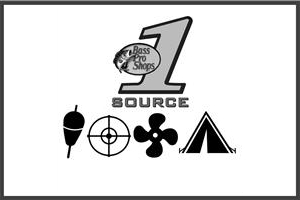
 Channel bass -- or red fish, as we like to call them -- offer the most exciting saltwater fishing to be had from the Texas Coast all the way around the horn to Maryland. There is nothing that can touch the strike of a red drum, be it 10 inches long or 60 inches long. The great thing about these awesome tackle testers is they are one of the biggest and definitely the most fighting fish to be caught in shallow water consistently. And another great thing about the channel bass -- you can catch them from the bank a lot of times, especially in the spring and fall when they make their runs.
Channel bass -- or red fish, as we like to call them -- offer the most exciting saltwater fishing to be had from the Texas Coast all the way around the horn to Maryland. There is nothing that can touch the strike of a red drum, be it 10 inches long or 60 inches long. The great thing about these awesome tackle testers is they are one of the biggest and definitely the most fighting fish to be caught in shallow water consistently. And another great thing about the channel bass -- you can catch them from the bank a lot of times, especially in the spring and fall when they make their runs.
I have to say after fishing all over for reds, if you want to constantly catch the 46- to 55-inch monsters, the mouth of the Chesapeake Bay and the eastern shore of Virginia is the place to go. There are more fish in Florida or Louisiana, but much bigger reds are in Virginia.
Red fish are called “channel bass” for a reason that is self explanatory: They love to travel in channels, either in the breakers or along the beaches. This is where fishing along the beach can be so much fun, as a lot of times you don’t have to cast out too far to get in a trough, as we call it, and the reds feed right along the beach or right in the breakers.
I learned everything I know about drum fishing from Captain Dave Griffith from Cape Charles, Virginia. He has spent more time studying reds and fishing for them than any people I know. He releases an average of 90 tagged citation reds a year. He has taught me all I know, and the main thing is to have fresh bait, be it crabs, peelers, bunker, spot or croaker. Peelers or crabs are a favorite bait, and are rigged to swim freely. Dave will take an ice pick and make a hole on the end of the crab shell and thread a Mustad 8/0 circle hook through, and this allows the crab to swim naturally and freely.
We use a fairly heavy Ocean Master IGFA rod and an Offshore Angler Captains Choice 6/0 reel with 80-lb XPS 8 braid line, rigged Carolina styled. He uses a 4- to 8-oz bell sinker -- the key being use as light as possible to hold bottom in the current … about a 3-foot XPS 80-lb mono leader with the Mustad 8/0 circle hook.
We like to sit just a good cast off the bank and cast into the trough just off shore, or the same trough you would cast to from the shore usually right after the tide starts moving one way or the other. Usually put out about four rods and wait. One thing I love about the red is when he bites, it ain’t no “tap-tap” -- it’s “you-better-be-hanging-on-or-something-is-going-overboard.” You reel about two in a row in without a break, and you’re gonna want a break. The power is so unbelievable, and once you experience it, you will be a hooked drum fisherman for life.
If you fish in the breakers, you need a good Raymarine depth finder, and look for ditches in the breakers. Again, the reds like to travel through these places, sometimes feeding in the ditches and other times right in the breakers. You have to try both to get a feel for where they are feeding.
If you like to cast artificial lures, we will take a heavy-duty Ocean Master spinning outfit with 20- to 30-lb test Excel line and cast Offshore Hot Lip bucktails or Offshore Angler Saltwater Sally swim baits and just slowly reel them in. If he’s there and hungry, this will be the most awesome strike you will ever get.
Give the channel bass a try and you won’t regret it! God bless, and thank a soldier for a job well done!
by Woo Daves
- 5142 views

